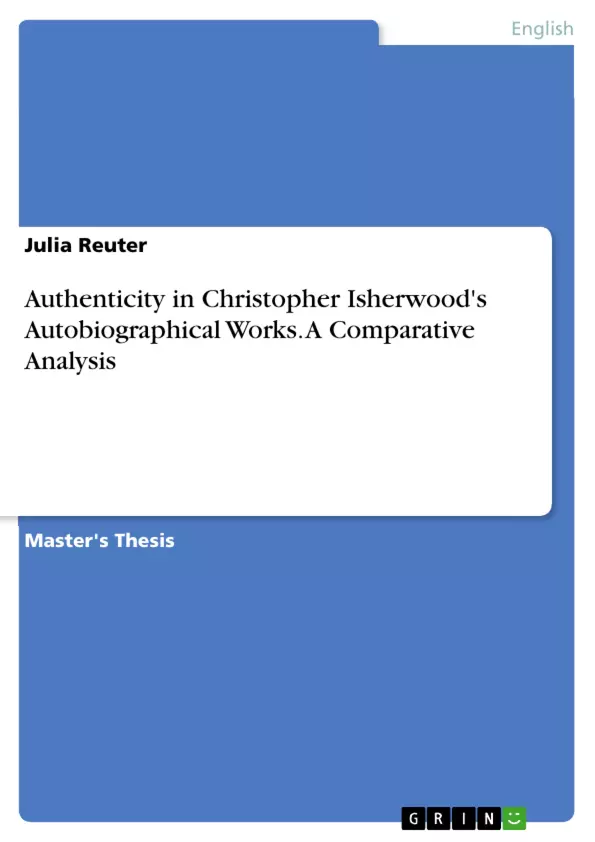This study delves into the complex world of Christopher Isherwood's autobiographical works, exploring how he constructs authenticity and how readers are expected to respond. Isherwood, known for his candor and professional charm, often relied on his journals for inspiration in his novels, blurring the lines between fiction and autobiography. Drawing from prevalent theories on autobiography, this research focuses on Isherwood's autobiographical novel "Lions and Shadows" (1938), his family memoir "Kathleen and Frank" (1971), and his autobiography "Christopher and His Kind" (1976). Through a comparative analysis of these texts, we aim to uncover the extent of Isherwood's "apparent candour" and shed light on his unique approach to authenticity in autobiographical storytelling.
Inhaltsverzeichnis (Table of Contents)
- Autobiographical Glimpses
- Brief Outline of Isherwood's Life
- A Theory of Autobiography
- Constructing and Deconstructing Authenticity
- Authenticity in Isherwood's Works
- Lions and Shadows
- Fact or Fiction?
- Gaps in the Narrative
- Promises Kept?
- Kathleen and Frank
- The Relevance of Kathleen's and Frank's Lives
- Chiefly about Christopher?
- Promises Kept?
- Christopher and His Kind
- Filling In the Gaps
- The Narrator's Critical Attitude
- Promises Kept?
- Lions and Shadows
- The Serpentine Quality of Fiction
Zielsetzung und Themenschwerpunkte (Objectives and Key Themes)
This thesis examines the question of authenticity in Christopher Isherwood's autobiographical writings, specifically analyzing his works *Lions and Shadows*, *Kathleen and Frank*, and *Christopher and His Kind* in order to assess how Isherwood constructs authenticity and how the reader is expected to respond. The main objectives are to explore the extent of Isherwood's "apparent candour" (Parker 2004: n.p.) and to determine how effectively these autobiographical works fulfill the implied "promises" of authenticity. The key themes of this thesis include:- The nature of autobiography and its inherent limitations
- The construction of authenticity in literary works
- The relationship between fact and fiction in autobiographical writing
- The role of the reader in interpreting autobiographical narratives
- The influence of personal experiences and relationships on Isherwood's writing
Zusammenfassung der Kapitel (Chapter Summaries)
Chapter 1, "Autobiographical Glimpses," provides an overview of Isherwood's life and the theoretical framework for the analysis of his autobiographical works. It outlines the key concepts and challenges of autobiography, including its inherent subjectivity and the artificiality of constructing a narrative from lived experience. Chapter 2, "Authenticity in Isherwood's Works," delves into the analysis of three specific texts: *Lions and Shadows*, *Kathleen and Frank*, and *Christopher and His Kind*. This chapter examines each work individually, exploring the ways in which Isherwood constructs authenticity within the narrative, focusing on the author's relationship to his characters and his representation of events. The chapter also considers the reader's experience and their understanding of the texts' veracity.
Schlüsselwörter (Keywords)
Key terms and concepts explored in this thesis include autobiography, authenticity, biographical fiction, literary analysis, Christopher Isherwood, *Lions and Shadows*, *Kathleen and Frank*, *Christopher and His Kind*, fact and fiction, narrative construction, reader response, and the relationship between personal experience and writing.- Arbeit zitieren
- Julia Reuter (Autor:in), 2011, Authenticity in Christopher Isherwood's Autobiographical Works. A Comparative Analysis, München, GRIN Verlag, https://www.grin.com/document/1416290



